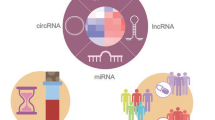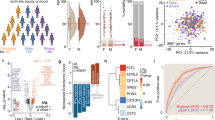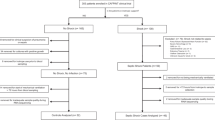Abstract
Transcriptomics is the study of all the RNA that makes up a tissue or cell, and offers a powerful way to unravel the highly heterogeneous syndromes that are encountered in critical care. Notably, the host response to sepsis is inundated with complexity, and has been subject to numerous investigations to determine the role of coding and non-coding RNAs. In the blood alone, RNAs undergo vast and dynamic regulatory changes as sepsis progresses, knowledge of which has significantly contributed to the understanding of the dysregulated pro- and anti-inflammatory responses. Despite better comprehension, the morbidity and mortality of these patients remains high. The inherent heterogeneity is proving to be difficult to grasp, and highlights a compelling need to improve, and potentially redefine the prevailing approach towards managing sepsis. This chapter provides an overview on how transcriptomics can facilitate progression towards better outcomes for critically ill patients, from understanding sepsis pathophysiology, to develo** host biomarkers for early detection, and deriving new enrichment strategies to welcome a more personalized approach to treatment.
Access this chapter
Tax calculation will be finalised at checkout
Purchases are for personal use only
Similar content being viewed by others
References
Singer M, Deutschman CS, Seymour CW, et al. The third international consensus definitions for sepsis and septic shock (Sepsis-3). JAMA. 2016;315:801–10.
Rudd KE, Johnson SC, Agesa KM, et al. Global, regional, and national sepsis incidence and mortality, 1990–2017: analysis for the Global Burden of Disease study. Lancet. 2020;395:200–11.
Evans L, Rhodes A, Alhazzani W, et al. Surviving sepsis campaign: international guidelines for management of sepsis and septic shock 2021. Crit Care Med. 2021;49:e1063–143.
Maslove DM, Tang B, Shankar-Hari M, et al. Redefining critical illness. Nat Med. 2022;28:1141–8.
McLean AS, Shojaei M. Transcriptomics in the intensive care unit. Lancet Respir Med. 2022;10:824–6.
Stanski NL, Wong HR. Prognostic and predictive enrichment in sepsis. Nat Rev Nephrol. 2020;16:20–31.
Gotts JE, Matthay MA. Sepsis: pathophysiology and clinical management. BMJ. 2016;353:i1585.
Calvano S, **ao W, Richards R, et al. A network-based analysis of systemic inflammation in humans. Nature. 2005;437:1032–7.
Talwar S, Munson P, Barb J, et al. Gene expression profiles of peripheral blood leukocytes after endotoxin challenge in humans. Physiol Genomics. 2006;25:203–15.
Tang BM, Huang SJ, Mclean AS. Genome-wide transcription profiling of human sepsis: a systematic review. Crit Care. 2010;14:R237.
Davenport EE, Burnham KL, Radhakrishnan J, et al. Genomic landscape of the individual host response and outcomes in sepsis: a prospective cohort study. Lancet Respir Med. 2016;4:259–71.
Maslove DM, Wong HR. Gene expression profiling in sepsis: timing, tissue and translational considerations. Trends Mol Med. 2014;20:204–13.
Antonakos N, Gilbert C, Théroude C, Schrijver IT, Roger T. Modes of action and diagnostic value of miRNAs in sepsis. Front Immunol. 2022;13:951798.
Quinn SR, O’Neill LA. A trio of microRNAs that control toll-like receptor signaling. Int Immunol. 2011;23:421–5.
Zheng G, Pan M, ** W, ** G, Huang Y. MicroRNA-135a is up-regulated and aggravates myocardial depression in sepsis via regulating p38 MAPK/NF-κB pathway. Int Immunopharmacol. 2017;45:6–12.
Hashemian SMH, Pourhanifeh MH, Fadaei S, Velayati AA, Mirzaei H, Hamblin MR. Non-coding RNAs and exosomes: their role in the pathogenesis of sepsis. Mol Ther Nucl Acids. 2020;21:51–74.
Liu T, Liu J, Tian C, Wang H, Wen M, Yan M. LncRNA THRIL is upregulated in sepsis and sponges miR-19a to upregulate TNF-α in human bronchial epithelial cells. J Inflamm. 2020;17:31.
Wei L, Yang Y, Wang W, Xu R. Circular RNAs in the pathogenesis of sepsis and their clinical implications: a narrative review. Ann Acad Med. 2022;51:221–7.
Kumar A, Roberts D, Wood KE, et al. Duration of hypotension before initiation of effective antimicrobial therapy is the critical determinant of survival in human septic shock. Crit Care Med. 2006;34:1589–96.
Iskander KN, Osuchowski MF, Stearns-Kurosawa DJ, et al. Sepsis: multiple abnormalities, heterogeneous responses, and evolving understanding. Physiol Rev. 2013;93:1247–88.
Seymour CW, Liu VX, Iwashyna TJ, et al. Assessment of clinical criteria for sepsis: for the Third International Consensus Definitions for Sepsis and Septic Shock (Sepsis-3). JAMA. 2016;315:762–74.
Cajander S, Bäckman A, Tina E, Strålin K, Söderquist B, Källman. Preliminary results in quantitation of HLA-DRA by real-time PCR: a promising approach to identify immunosuppression in sepsis. Crit Care. 2013;17:R223.
Ma Y, Vilanova D, Atalar K, et al. Genome-wide sequencing of cellular microRNAs identifies a combinatorial expression signature diagnostic of sepsis. PLoS One. 2013;8:e75918.
Zhang W, Chen B, Chen W. LncRNA GAS5 relates to Th17 cells and serves as a potential biomarker for sepsis inflammation, organ dysfunctions and mortality risk. J Clin Lab Anal. 2022;36:e24309.
Tang BM, Shojaei M, Parnell GP, et al. A novel immune biomarker IFI27 discriminates between influenza and bacteria in patients with suspected respiratory infection. Eur Respir J. 2017;49:1602098.
Sweeney TE, Wong HR, Khatri P. Robust classification of bacterial and viral infections via integrated host gene expression diagnostics. Sci Transl Med. 2016;8:346ra91.
Miller RMI, Lopansri BK, Burke JP, et al. Validation of a host response assay, SeptiCyte LAB, for discriminating sepsis from systemic inflammatory response syndrome in the ICU. Am J Respir Crit Care Med. 2018;198:903–13.
Davis R, Krupa N, van der Poll T, et al. SeptiCyte® RAPID in sepsis cases with malignancy or treated with antineoplastics/immunosuppressants. Crit Care Med. 2021;49:643 (abst).
Sweeney TE, Shidham A, Wong HR, Khatri PA. A comprehensive time-course-based multicohort analysis of sepsis and sterile inflammation reveals a robust diagnostic gene set. Sci Transl Med. 2015;7:287ra71.
Sweeney TE, Perumal TM, Henao R, et al. A community approach to mortality prediction in sepsis via gene expression analysis. Nat Commun. 2018;9:694.
Wong H, Cvijanovich NZ, Anas N, et al. Improved risk stratification in pediatric septic shock using both protein and mRNA biomarkers. PERSEVERE-XP. Am J Respir Crit Care Med. 2017;196:494–501.
Scicluna BP, Wiewel MA, van Vught LA, et al. Molecular biomarker to assist in diagnosing abdominal sepsis upon ICU admission. Am J Respir Crit Care Med. 2017;197:1070–3.
He YD, Wohlford EM, Uhle F, Buturovic L, Liesenfeld O, Sweeney TE. The optimization and biological significance of a 29-host-immune-mRNA panel for the diagnosis of acute infections and sepsis. J Pers Med. 2021;11:735.
Zheng X, Leunk KS, Wong MH, Cheng L. Long non-coding RNA pairs to assist in diagnosing sepsis. BMC Genomics. 2021;22:275.
Marshall JC. Why have clinical trials in sepsis failed? Trends Mol Med. 2014;20:195–203.
Meisel C, Schefold JC, Pschowski R, et al. Granulocyte-macrophage colony-stimulating factor to reverse sepsis-associated immunosuppression: a double-blind, randomized, placebo-controlled multicenter trial. Am J Respir Crit Care Med. 2009;180:640–8.
Leligdowicz A, Matthay MA. Heterogeneity in sepsis: new biological evidence with clinical applications. Crit Care. 2019;23:80.
Antcliffe DB, Burnham KL, Al-Beidh F, et al. Transcriptomic signatures in sepsis and a differential response to steroids: from the VANISH randomized trial. Am J Respir Crit Care Med. 2018;199:980–6.
Baghela A, Pena OM, Lee AH, et al. Predicting sepsis severity at first clinical presentation: the role of endotypes and mechanistic signatures. EBioMedicine. 2022;75:103776.
Newman AM, Liu CL, Green MR, et al. Robust enumeration of cell subsets from tissue expression profiles. Nat Methods. 2015;12:453–7.
Reyes M, Filbin MR, Bhattacharyya RP, et al. An immune cell signature of bacterial sepsis. Nat Med. 2020;26:333–40.
Author information
Authors and Affiliations
Corresponding author
Editor information
Editors and Affiliations
Rights and permissions
Copyright information
© 2023 The Author(s), under exclusive license to Springer Nature Switzerland AG
About this chapter
Cite this chapter
Pelaia, T.M., Shojaei, M., McLean, A.S. (2023). The Role of Transcriptomics in Redefining Critical Illness. In: Vincent, JL. (eds) Annual Update in Intensive Care and Emergency Medicine 2023. Annual Update in Intensive Care and Emergency Medicine. Springer, Cham. https://doi.org/10.1007/978-3-031-23005-9_1
Download citation
DOI: https://doi.org/10.1007/978-3-031-23005-9_1
Published:
Publisher Name: Springer, Cham
Print ISBN: 978-3-031-23004-2
Online ISBN: 978-3-031-23005-9
eBook Packages: MedicineMedicine (R0)




